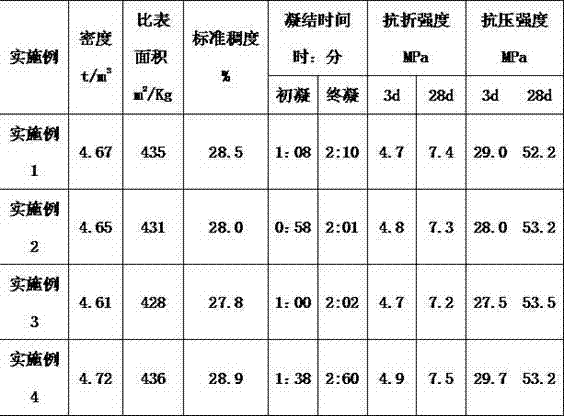Method for producing cement and sulfuric acid by calcining anhydrite
A technology of anhydrite and cement, which is applied in chemical instruments and methods, cement production, sulfur compounds, etc., can solve problems such as no major breakthroughs, and achieve the effects of cost reduction, high conversion rate, and energy saving
- Summary
- Abstract
- Description
- Claims
- Application Information
AI Technical Summary
Problems solved by technology
Method used
Image
Examples
Embodiment 1
[0021] This embodiment includes the following steps:
[0022] (1) Crush the anhydrite, and control the mass fraction of the crushed anhydrite 10mm sieve to 18%; dry it to generate hemihydrate gypsum, and control the moisture content of the hemihydrate gypsum to 8%;
[0023] (2) Mix barite, sand, coal and the hemihydrate gypsum obtained in step (1), place in the preheater, heat to 850-900°C, and then add the raw materials preheated by the preheater to the rotary kiln, Heating to 1240°C and keeping it warm for 3 hours, through chemical reaction, high-temperature kiln gas and solid materials containing sulfur dioxide are obtained, and the high-temperature kiln gas is introduced into the preheater for preheating raw materials, while reducing the temperature of the kiln gas;
[0024] The mass percentages of the hemihydrate gypsum, barite, sand and coal are: 50% of hemihydrate gypsum, 30% of barite, 15% of sand and 5% of coal;
[0025] (3) Cool the solid material obtained in step (...
Embodiment 2
[0030] This embodiment includes the following steps:
[0031] (1) Crush the anhydrite, and control the mass fraction of the 10mm sieve of the crushed anhydrite to be 12%; dry to generate hemihydrate gypsum, and control the moisture content of the hemihydrate gypsum to 7%;
[0032] (2) Mix barite, sand, coal and the hemihydrate gypsum obtained in step (1), place in a preheater, heat to 900-950°C, and then feed the raw materials preheated by the preheater into the rotary kiln, Heating to 1000°C, keeping it warm for 2 hours, through chemical reaction, high-temperature kiln gas and solid materials containing sulfur dioxide are obtained, and the high-temperature kiln gas is introduced into the preheater to preheat the raw materials, while reducing the temperature of the kiln gas;
[0033] The mass percent of described hemihydrate gypsum, barite, sand and coal is: hemihydrate gypsum 40%, barite 50%, sand 5%, coal 5%;
[0034] (3) Cool the solid material obtained in step (2) to a te...
Embodiment 3
[0039] This embodiment includes the following steps:
[0040] (1) Crush the anhydrite, and control the mass fraction of the crushed anhydrite 10mm sieve to 16%; dry it to generate hemihydrate gypsum, and control the moisture content of the hemihydrate gypsum to 8%;
[0041] (2) Mix barite, sand, coal and the hemihydrate gypsum obtained in step (1), place in the preheater, heat to 850-900°C, and then send the preheated raw materials into the rotary kiln , heated to 1450°C, kept for 5 hours, through chemical reaction, high-temperature kiln gas and solid materials containing sulfur dioxide were obtained, and the high-temperature kiln gas was introduced into the preheater for preheating raw materials, while reducing the temperature of the kiln gas;
[0042] The mass percentages of the hemihydrate gypsum, barite, sand and coal are: 70% of hemihydrate gypsum, 20% of barite, 5% of sand and 5% of coal;
[0043] (3) Cool the solid material obtained in step (2) to a temperature of 90°C...
PUM
 Login to View More
Login to View More Abstract
Description
Claims
Application Information
 Login to View More
Login to View More - R&D Engineer
- R&D Manager
- IP Professional
- Industry Leading Data Capabilities
- Powerful AI technology
- Patent DNA Extraction
Browse by: Latest US Patents, China's latest patents, Technical Efficacy Thesaurus, Application Domain, Technology Topic, Popular Technical Reports.
© 2024 PatSnap. All rights reserved.Legal|Privacy policy|Modern Slavery Act Transparency Statement|Sitemap|About US| Contact US: help@patsnap.com








